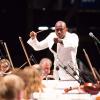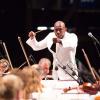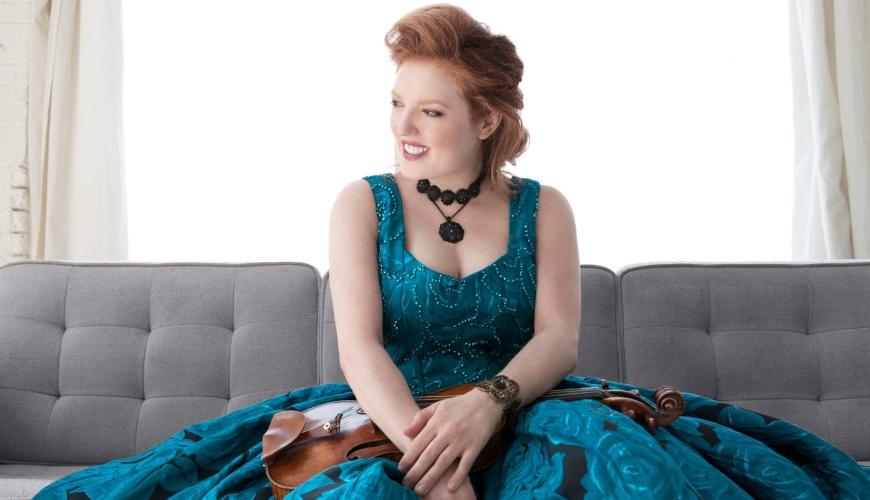
Star violinist Rachel Barton Pine wasn’t at the San Francisco Symphony this past weekend. On Sunday afternoon, Oct. 16, she was hanging with Berkeley Symphony musicians at Zellerbach Hall, playing Florence Price’s Violin Concerto No. 2. The comparison wouldn’t be necessary except that the Price concerto had graced the SF Symphony’s opening weekend less than a month ago. It’s a reminder that the Berkeley orchestra often matches its heavyweight division neighbor in ambition and daring, and not infrequently in musicianship.
Pine wasn’t the only star on display in Sunday’s concert, the orchestra’s season opener. Composer Brian Raphael Nabors capped his three-year residency with the Symphony with the world premiere of Upon Daybreak, commissioned through New Music USA’s Amplifying Voices Program. (This is the same program that brought Shelley Washington’s Both, which had its West Coast premiere this past weekend with Los Angeles Chamber Orchestra.)
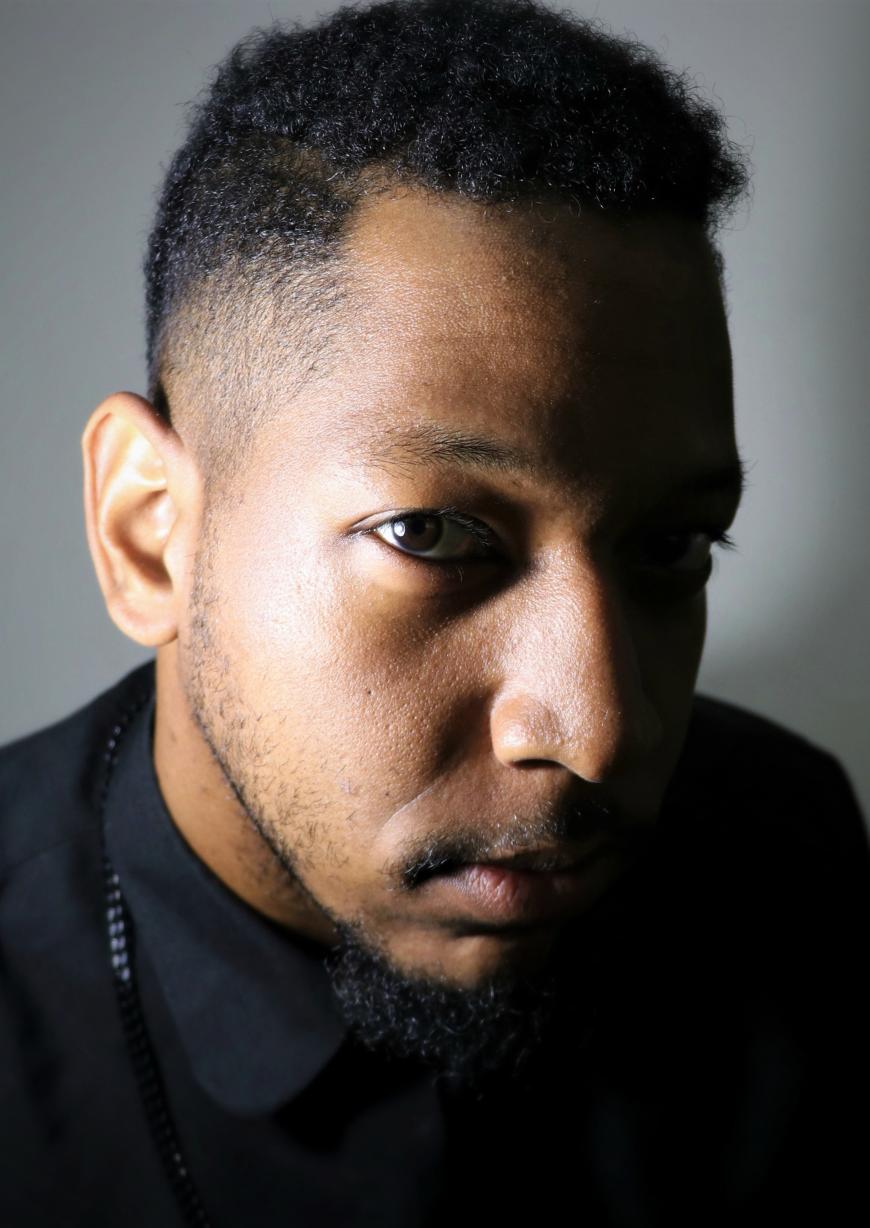
Nabors wrote Upon Daybreak as the third of a triptych of pieces exploring motion and breath, which become metaphors for humans moving through our common conception of time and into an uncertain future. Nabors cites Maya Angelou’s poem “A Brave and Startling Truth,” written for the 50th anniversary of the United Nations, as the inspiration for the new piece. The poem’s message of peacemaking is always timely, but Nabors, the son of a pastor, must have picked up on the poem’s rhetorical use of the repeating line “when we come to it,” so redolent of the cadences of a sermon in a Black church.
It's the same sense of movement away from scarring violence that opens the music, a vivacious sprint driven by the rat-a-tat of a familiar rhythmic pattern on a high-hat cymbal. The swelling orchestral rush prepares a stirring string melody, which Nabors dubs, in Thomas May’s excellent program notes, the “freedom theme.” From there the piece develops a familiar ABA form, with a slower tempo middle section giving way to a radiant finale with more than a few echoes of John Williams. (The “Adventures on Earth” cue from E.T. came to mind.) That is entirely in the spirit of a piece whose business is direct communication with the audience. It worked beautifully in Music Director Joseph Young’s enthusiastic reading.
Precisely because we can’t go backward in time, the discovery of a trove of Florence Price manuscripts in a trunk in an old house in 2009 seems like intervention from the gods. Both of the composer’s violin concertos were in there, along with dozens of other unperformed, unpublished pieces. A couple of years later, the Price renaissance began.
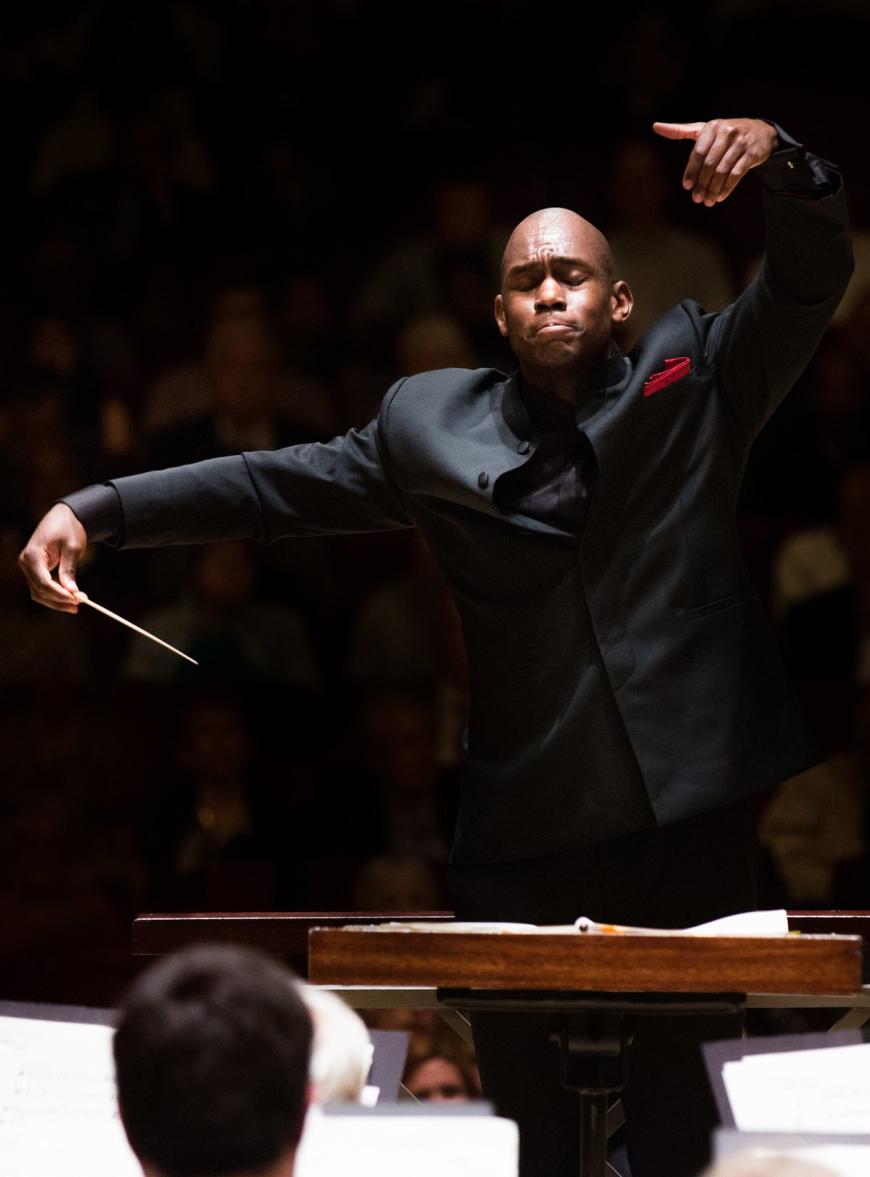
This concerto, at roughly 14 minutes, is rhapsody-like in the free alternation of multiple themes, and it’s definitely a concerto that calls for the heavy participation of the orchestra. Pine, who has recently released a recording of the work with the Royal Scottish National Orchestra under Jonathon Heyward’s baton, threw herself into the piece with a full-blooded opening cadenza. The orchestra responds by turning from a march-like opening to one of those harmonic side-slip passages in the winds that surprise and delight in the Third Symphony as well. It’s just that here, there’s no sense of being knocked into another world. Instead, the violin’s melody brings us to a dance, kind of like the jubas that Price lovers know from the symphonies. Pine and Young imparted a determined movement to the piece as the march returned in a jauntier guise, but the lyrical theme was back only half a minute later. To Pine’s credit, she rolled with these changes without indulging in anything over the top. She led a firm but touching performance, warmly supported by Young.
The regular Berkeley Symphony stars were also on hand. Thanks to the informally named “Freeway Philharmonic,” the freelancing musicians who drive the length of the Bay Area’s highways to play in its musical organizations, any local orchestra concert might turn out to be riveting. Listening to principal hornist Alex Camphouse play a wonderfully detailed and tonally splendid solo in the second movement of Tchaikovsky’s Fifth Symphony was only one reminder of that. There were wonderful solo moments throughout the orchestra in the Tchaikovsky, and overall the playing was warm and secure, though there’s no way to forget the suboptimal acoustics of Zellerbach Hall when it comes to balances between the sections. As usual, the trumpets and the lower brass boomed off the concrete walls with more aggressiveness than was warranted, and the cellos and violas had less presence than in an ideal hall. Young’s reading, though, was well paced and dramatic, and he has developed a rapport with the players: They gave their best.



